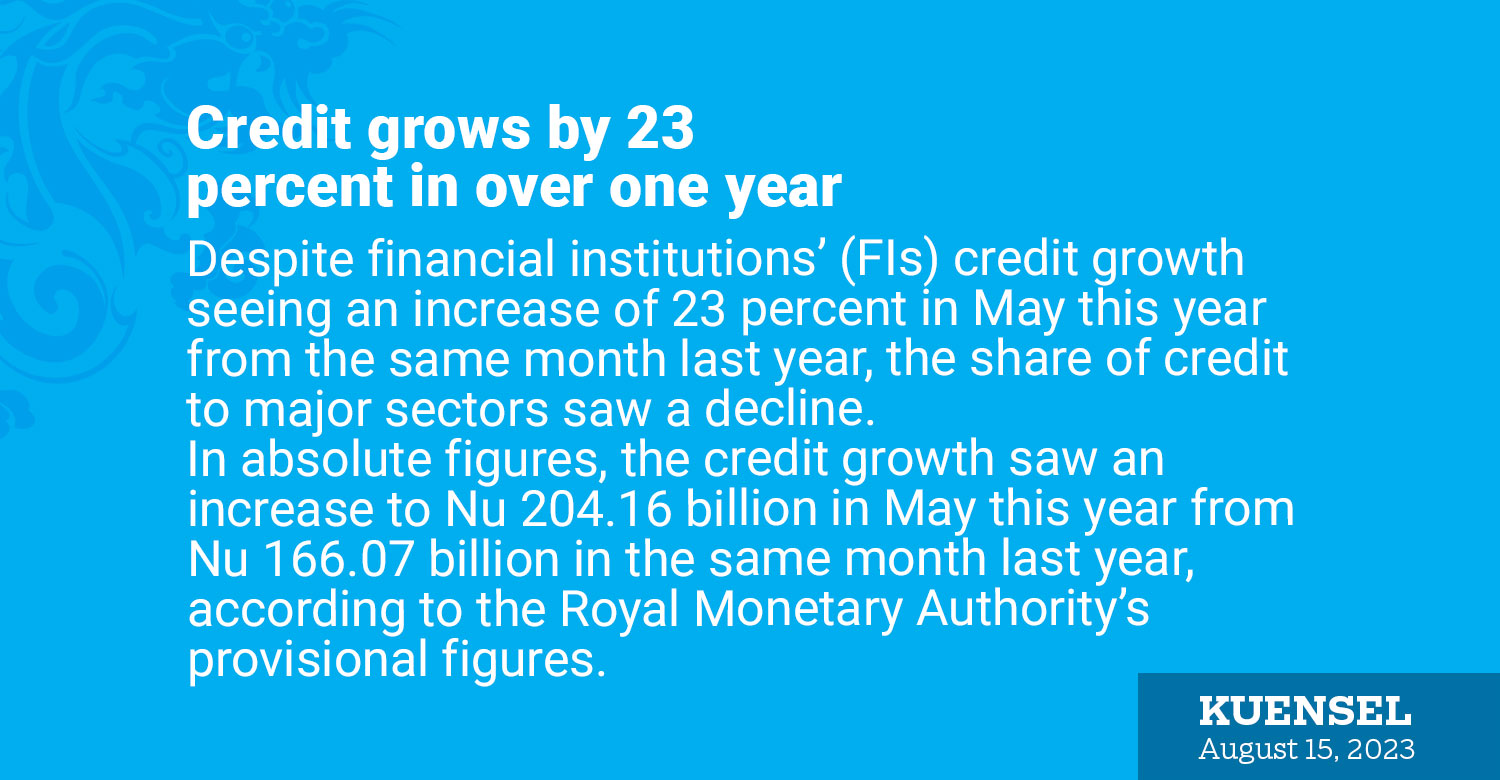Thukten Zangpo
Despite financial institutions’ (FIs) credit growth seeing an increase of 23 percent in May this year from the same month last year, the share of credit to major sectors saw a decline.
In absolute figures, the credit growth saw an increase to Nu 204.16 billion in May this year from Nu 166.07 billion in the same month last year, according to the Royal Monetary Authority’s provisional figures.
Going by the sector-wise credit, the housing sector had the highest growth standing at Nu 57.2 billion as of May this year, representing 28 percent of the total credit. The housing sector credit grew by 25.5 percent from Nu 45.57 billion in May last year.
However, the government suspended the housing loans from June 8 this year concerning the country’s outflow of foreign currency, high credit concentration and risk of non-performing loans (NPL).
The second highest credit, hotel and tourism sector at Nu 30.92 billion saw a decline by about 30 percent from Nu 43.67 billion as of May last year, comprising of 15 percent of the total credit.

At the same time, the credit to production and manufacturing saw a 7-percent growth to Nu 21.45 billion as of this year from Nu 20.06 billion in May last year, indicating an increased demand for financing and investment in this sector.
Conversely, the credit to agriculture and livestock and trade and commerce saw a decline by 31 percent and 23 percent to Nu 4.47 billion and 16.59 billion, respectively in May this year.
A banker said that the current economic scenario is not good, where the business in the trade and commerce sector is not able to pay the equated monthly installment. More than 80 percent of the credit in trade and commerce is translated to imports.
Credit to the transport sector also saw an increase by about 22.5 percent to Nu 9.1 billion from Nu 7.42 billion.
The education loans saw credit growth to Nu 17.17 billion in May this year from Nu 12.87 billion from December last year.
A high credit growth, on the other hand, signifies a boom although it entails some risks. Credit growth is good for an economy because FIs credit signals stronger economic recovery.
The finance ministry projected an economic growth rate of 4.2 percent this year and 5.2 percent the following year because of commissioning of Nikachhu hydropower in December this year and Punatshangchhu hydropower project-II in December next year.
However, the ministry warns of the risks of prolonged financial sector strains amid limited fiscal space and delays in hydro-projects, which would affect growth.
The Authority figure also shows that the NPL was reported at Nu 17.95 billion or gross NPL ratio of 8.21 percent as of May this year.
Housing sector has the highest NPL exposure at 27.3 percent, followed by hotel and tourism and production and manufacturing at 11.7 percent and 10 percent respectively.


